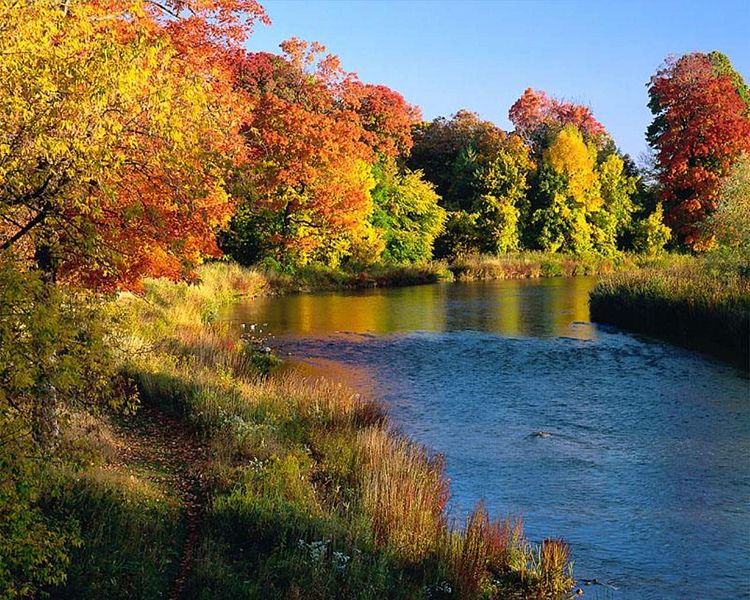This blessing called Indian summer

A slice of Indian summer from 2005. Photo by Peter Rufi, Creative Commons
What a glorious week! Sunshine and delicious temperatures, against the backdrop of fall colors and the special quality of light that saturates our world this time of year.
This last gasp of warmth is often called Indian summer – more about that name in a second. And it really comes in handy too. A nice psychological boost, not to mention a final window of opportunity for weather-sensitive work.
Case in point: We had a deck repair that concluded the day before a two-week road trip. All that bare wood with winter on the horizon, not good! But no worries, I thought. It can be stained when we get back. Except that our return in mid-September was so cold and rainy people were turning their furnaces on. Darn it!
Thankfully, good old Indian summer did make an appearance. Nearly a whole week of sun, no rain and temps above any danger zone for the task at hand. I spent a few solid days sanding and staining and was very grateful that chance came. Of course, there’s more that needs doing in the garden too. But those chores still happen in the cold or the damp, however less pleasant doing it then may be.
Heres more on that term, from a .pdf supplement by Brian Pierce from the National Ocean and Atmospheric Administration (NOAA):
What is Indian Summer?
The first cold spell of the fall signifying the change of seasons makes many people long for Indian Summer. But what exactly is Indian Summer?
True Indian Summer is a period of abnormally warm weather following the first killing freeze of autumn. A killing freeze occurs when the overnight temperature reaches 28 degrees of cold…and may or may not occur with frost. Indian Summer typically occurs in mid to late autumn and can occur more than once.
In Europe…the equivalent of Indian Summer is termed Old Wives Summer or in poetry as Halcyon Days. In England…it is known as either St. Martin’s Summer or St. Luke’s Summer depending on the date of occurrence.
Apparently the term has become a standard term in English speaking countries. Indeed, the UK is enjoying an Indian summer this with mid-September temperatures that rival or exceed sunny Spain. This generated articles in the British press explaining that the term does not come from India, but (quite probably) from colonial days in North America.
One such explanatory item from the Guardian even cites an article from 1837 that expands on the term and its origins. A quote frequently used to source the term comes from Hector Saint John de Crèvecoeur, who wrote in 1778:
Sometimes the rain is followed by an interval of calm and warmth which is called the Indian Summer; its characteristics are a tranquil atmosphere and general smokiness.
But why call it Indian summer? Here’s what the Old Farmer’s Almanac says on that:
There are many theories. Some say it comes from the early Algonquian Native Americans, who believed that the condition was caused by a warm wind sent from the court of their southwestern god, Cautantowwit.
The most probable origin of the term, in our view, goes back to the very early settlers in New England. Each year they would welcome the arrival of a cold wintry weather in late October when they could leave their stockades unarmed. But then came a time when it would suddenly turn warm again, and the Native Americans would decide to have one more go at the settlers. “Indian summer,” the settlers called it.
A constant problem with Internet research is that so much of what is found simply copies and repeats sources, that may or may not be correct. So I throw this out to the collective and nuanced expertise of All In readership. Where do you think the term came from? Is it possibly offensive, as in the name of a Washington football team?
Whatever you call it, here’s to a grand spell of wonderful weather.
Tags: history, Indian summer, language, weather







